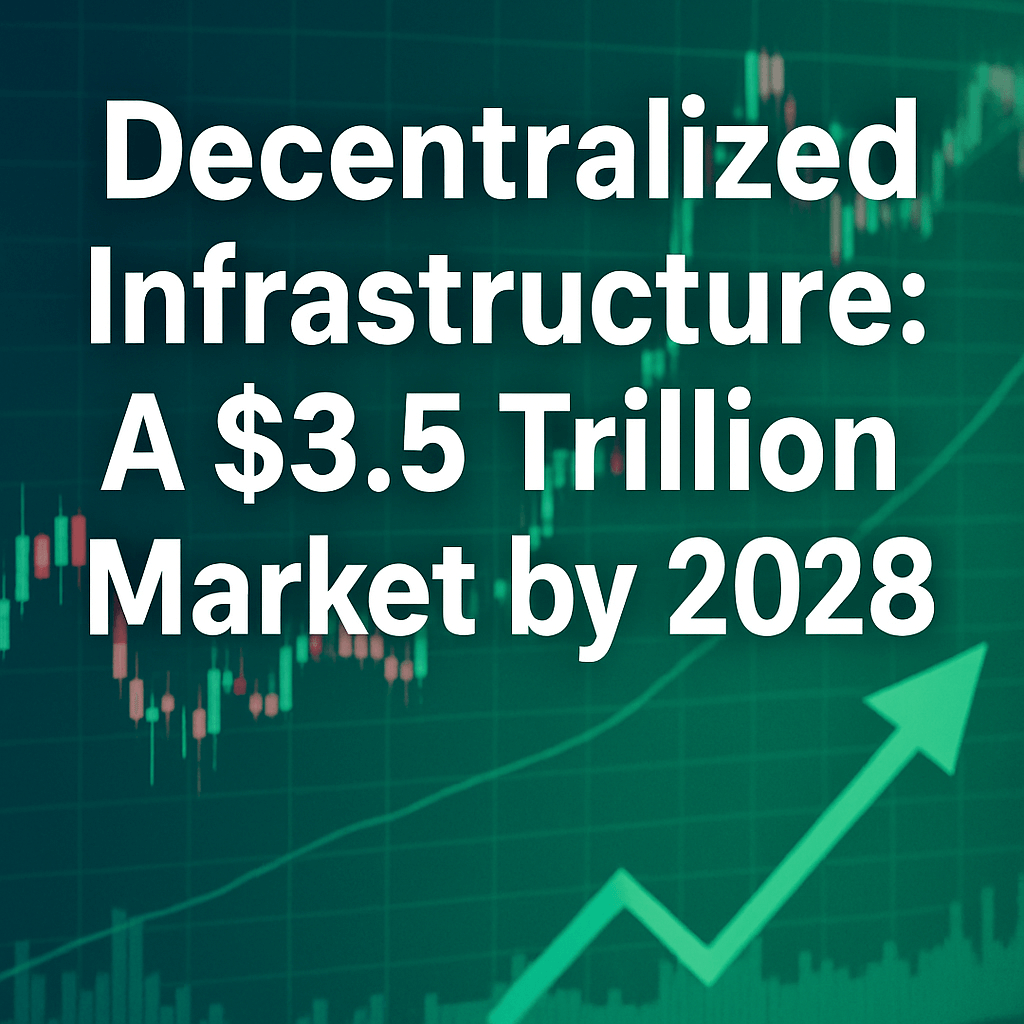Decentralized Infrastructure: A $3.5 Trillion Market by 2028


The decentralized physical infrastructure network (DePIN) market is projected to experience remarkable growth, potentially reaching $3.5 trillion by the year 2028, according to a comprehensive analysis released by the World Economic Forum (WEF). This surge is anticipated due to the integration of emerging technologies such as artificial intelligence (AI) and blockchain, which are set to revolutionize how physical infrastructure is managed and operated.
Understanding DePIN and Its Functionality
Decentralized Physical Infrastructure Networks refer to a new framework that replaces traditional centralized systems with decentralized entities that leverage digital technologies. The concept encompasses various infrastructure types—ranging from energy grids, transportation systems, and supply chain logistics to telecommunications. By using blockchain technology, DePIN facilitates secure, transparent, and efficient transactions between devices, sensors, and users while ensuring data integrity.
AI plays a critical role in optimizing these systems, allowing for predictive maintenance, real-time analytics, and autonomous decision-making. Such capabilities can lead to not only reduced operational costs but also enhanced resilience against disruptions.
Key Drivers of Market Growth
- Technological Advancements: The increasing capability of AI algorithms, combined with blockchain’s ability to provide secure and immutable records, enables new models of infrastructure deployment and management.
- Demand for Sustainability: As businesses and governments shift towards environmentally friendly practices, the demand for decentralized solutions that enhance energy efficiency and resource allocation is driving the DePIN market.
- Regulatory Support: Governments are beginning to recognize the potential of decentralized systems, leading to more supportive regulatory frameworks that encourage investment and innovation.
The Role of Blockchain in DePIN
Blockchain serves as the backbone of DePIN by providing a decentralized ledger that records all transactions between nodes in the network securely and transparently. This not only enhances security but also eliminates the need for intermediaries, thereby reducing costs and increasing efficiency.
For instance, in energy grids, blockchain technology can facilitate peer-to-peer energy trading, allowing consumers to sell excess energy generated from renewable sources directly to each other. Companies like Power Ledger are already pioneering this model, demonstrating a successful application of blockchain in decentralized energy markets.
AI’s Contribution to Operational Efficiency
In tandem with blockchain, AI can significantly improve operational efficiency within DePIN environments. For example, predictive analytics powered by AI can forecast failures or maintenance needs in infrastructure before they result in downtime. This proactive approach not only saves costs but also extends the lifespan of infrastructure assets.
Furthermore, AI algorithms can optimize resource allocation based on real-time data analytics, enhancing the overall functionality of the infrastructure. Applications range from traffic management systems that adapt to changing conditions to logistics platforms that minimize supply chain disruptions.
Challenges Ahead
While the potential for growth in the DePIN market is significant, certain challenges could hinder its expansion. Issues such as technological integration, regulatory uncertainty, and concerns over data privacy and security remain prevalent. Additionally, the scalability of decentralized systems in managing large volumes of transactions must be addressed.
Industry experts suggest that collaboration between private and public sectors will be vital in overcoming these hurdles and fostering an environment conducive to innovation.
Conclusion and Future Implications
As the DePIN market continues to evolve, the confluence of AI and blockchain offers a promising landscape for investment and development. Stakeholders from various sectors—energy, transportation, and telecommunications—should stay informed about technological advancements and regulatory changes that could impact this burgeoning market.
The potential to reach a $3.5 trillion valuation by 2028 underlines the transformative impact these technologies can have on our physical infrastructure systems. Entities willing to adapt and innovate may find themselves at the forefront of this upcoming shift.
Expert Opinion: According to industry veteran Dr. Jane Smith, “The intersection of AI and blockchain will redefine infrastructure management. Businesses that invest early in DePIN technologies will likely lead the charge into a more efficient and sustainable future.”